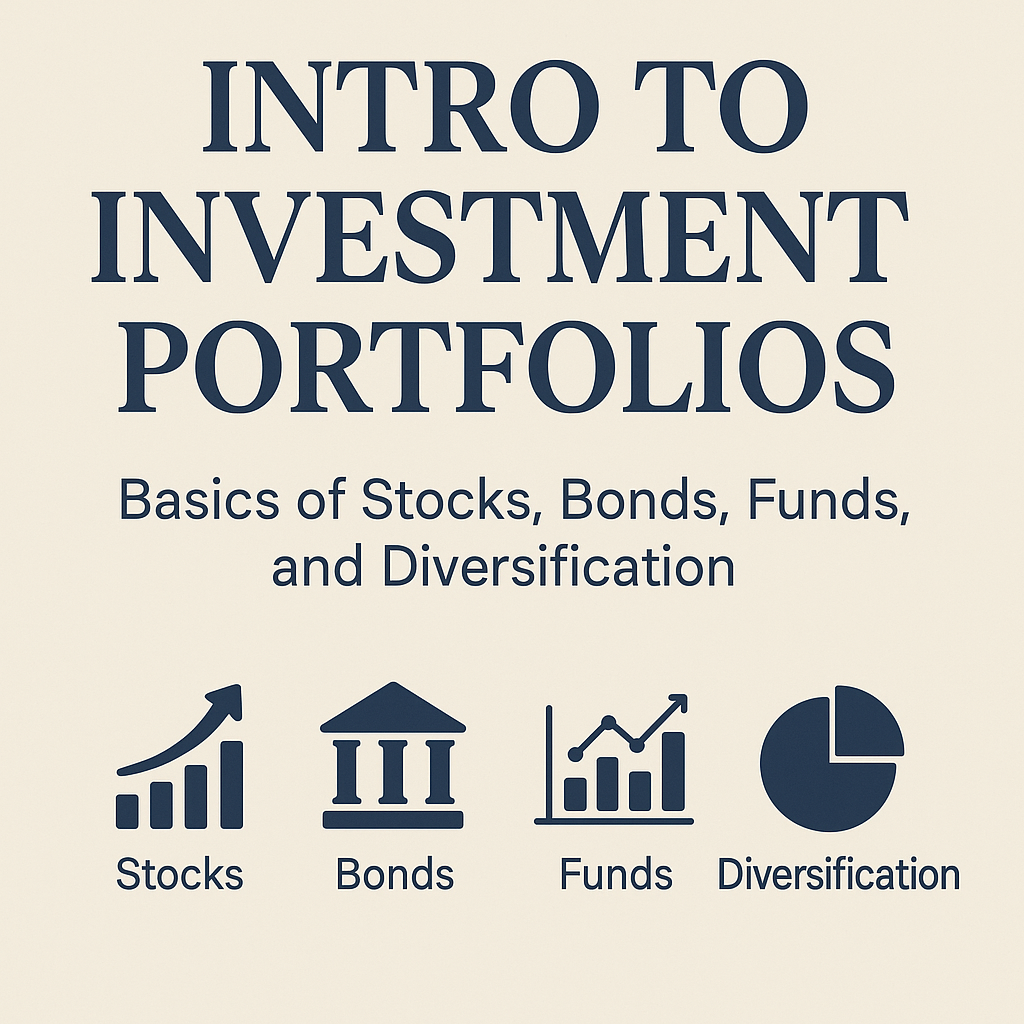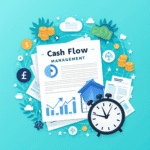Intro to Investment Portfolios: Basics of Stocks, Bonds, Funds, and Diversification
Last updated: June 7, 2025
Building wealth isn’t about luck—it’s about strategy. And one of the most effective strategies? Building strong investment portfolios.
An investment portfolio is your personalized collection of financial assets—your ticket to growing wealth over time. Whether you’re saving for retirement, buying a home, or simply securing your future, knowing the basics of stocks, bonds, funds, and diversification is essential.
This guide breaks down each component of a smart investment portfolio in clear, practical terms—no jargon, just useful info.
What Is an Investment Portfolio?
An investment portfolio is a collection of assets like stocks, bonds, mutual funds, ETFs, real estate, or even crypto. Think of it as a financial toolbox designed to meet your money goals.
Everyone’s portfolio looks different depending on their goals, timeline, and risk tolerance. A younger investor might focus heavily on stocks, while someone nearing retirement could lean toward safer assets like bonds.
Want to understand how psychology influences portfolio choices? Read The Role of Behavioral Finance in Investment Decisions.
Why Investment Portfolios Matter
Keeping money in savings alone won’t keep up with inflation. But a diversified portfolio gives your money the chance to grow, earn income, and work harder over time. It’s your long-term defense against rising costs and your offense for financial growth.
Stocks: The Growth Engine of Investment Portfolios
Stocks represent ownership in a company. When you invest in a stock, you’re betting that the company will grow—and so will your investment.
- Pros: High growth potential, dividend income, easy to buy/sell
- Cons: Can be volatile, affected by market news
Example: Investing $1,000 in an S&P 500 index fund with an average 7% annual return could grow to $7,600+ in 30 years.
Want to see how time and patience can turn small amounts into serious wealth? Check out The Power of Compound Interest: How Small Investments Grow Big.
Bonds: The Stability Layer
Bonds are loans you give to governments or companies. In return, they pay you interest over time.
- Pros: Lower risk, consistent returns, good for income
- Cons: Lower growth than stocks, sensitive to interest rates
Learn more from trusted resources like Fidelity and Charles Schwab on how bonds fit into your investment strategy.
Read our full guide on investing in bonds
Funds and ETFs: Simple, Smart Diversification
Mutual funds and ETFs bundle dozens—or even hundreds—of stocks or bonds into a single investment. This makes diversification simple and low-cost.
- Mutual Funds: Often actively managed, bought through a fund company
- ETFs: Traded like stocks, usually lower fees, often passive
Explore ETF options through platforms like Vanguard, known for their low-cost index funds.
Check out our beginner’s guide to ETFs
Diversification: Your Portfolio’s Safety Net
Diversification means spreading your money across different investments so your entire portfolio doesn’t suffer if one asset underperforms.
- Combine stocks, bonds, and possibly real estate or commodities
- Spread across different sectors and global markets
5 practical ways to diversify your portfolio
How to Build Your Investment Portfolio
- Set your goals: Retirement? Home? College savings?
- Know your risk tolerance: Can you handle market dips?
- Choose asset allocation: For example, 80% stocks / 20% bonds
- Pick your investments: Index funds, ETFs, or individual stocks
- Automate contributions: Invest monthly or bi-weekly
- Rebalance yearly: Adjust to stay aligned with your goals
Curious how tech is shaping the future of investing? Don’t miss How AI in Wealth Management Is Transforming the Future of Investing.
Mistakes to Avoid
- Trying to time the market
- Ignoring fees and taxes
- Over-concentrating in one asset
- Panic selling during market drops
- Neglecting to review your portfolio
Final Thoughts: Start Where You Are
You don’t need thousands of dollars to begin building a solid investment portfolio. Start small. Stay consistent. And let compounding do the rest.
Over time, your investment portfolio becomes more than just a set of numbers—it becomes a reflection of your goals, discipline, and future security.
FAQs About Investment Portfolios
What is the best type of investment portfolio for beginners?
A diversified mix of low-cost index funds and bonds is ideal for most beginners. Consider a target-date fund for simplicity.
How often should I rebalance my portfolio?
Most experts recommend rebalancing once or twice a year, or when your asset allocation drifts by more than 5%.
Can I build an investment portfolio with just $100?
Yes! Many brokerages like Fidelity or Schwab let you start with fractional shares or ETFs.
Should I use a robo-advisor?
Robo-advisors can be a smart, low-fee option for hands-off investors. They automatically manage and rebalance your portfolio based on your goals.
Ready to Start Building Your Investment Portfolio?
Take the first step today. Open an investment account, pick your first fund or ETF, and automate your contributions.





